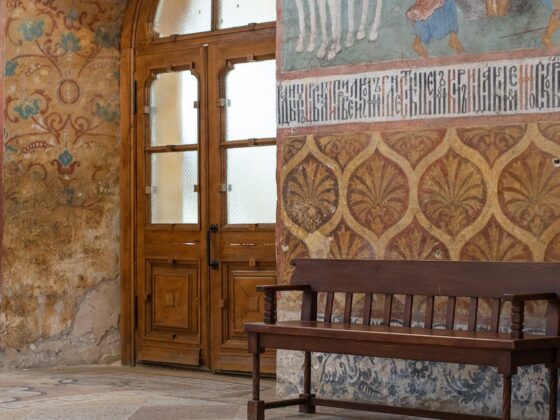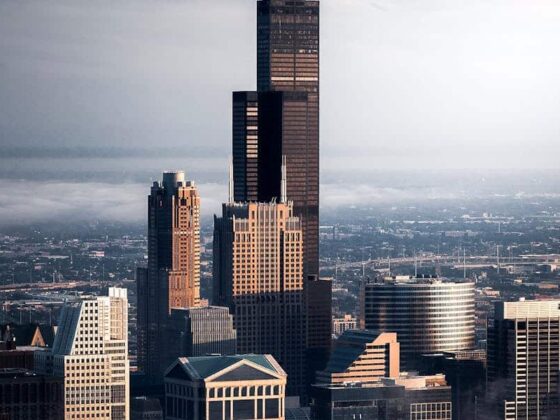The allure of a popcorn ceiling, with its unique textured appearance, has faded over the years, leading many homeowners to seek ways to remove it. If your popcorn ceiling has been painted, the task becomes even more challenging. Painted popcorn ceilings not only detract from a room’s aesthetics but also pose potential health hazards, especially if they contain asbestos. This comprehensive guide will walk you through the process of safely and effectively removing a painted popcorn ceiling, offering step-by-step instructions, insights into when removal is necessary, and crucial safety precautions to ensure a successful and hazard-free project. Say goodbye to that outdated ceiling and hello to a fresh, modern look for your space!
How To Remove Popcorn Ceiling That Has Been Painted?
Removing a painted popcorn ceiling can be a labor-intensive project, but it can dramatically improve the look and feel of a room. Here are seven steps to guide you through the process:
Safety First: Before you start, ensure you have the proper safety gear: goggles, a dust mask, disposable coveralls, and gloves. Turn off the electricity to the room to avoid any potential electrical hazards.
Test for Asbestos (If Applicable): If your home was built before the late 1970s, there’s a risk that the popcorn ceiling contains asbestos. Have a sample tested by a certified lab before proceeding. If asbestos is present, consult professionals for removal.
Prepare the Room: Remove all furniture and cover the floors and walls with plastic sheeting to protect them from dust and debris.
Seal off the room with plastic sheeting to prevent dust from spreading to other areas of your home.
Moisten the Ceiling: Using a garden sprayer or a sponge mop, dampen a small section of the ceiling with water. Let it soak for 15-20 minutes. This helps to soften the popcorn texture, making it easier to remove.
Scrape Off the Popcorn Texture: Use a wide putty knife or a specialized popcorn ceiling scraper to gently scrape off the softened texture.
Work in small sections, being careful not to gouge the drywall underneath.
Collect the scraped material in a plastic bag for disposal.
Address Stubborn Spots: Some areas may be more challenging to remove. Reapply water and gently scrape until the texture is gone.Repair any damaged areas or gouges with joint compound once the ceiling is smooth.
Finish and Paint: After the popcorn texture is removed and the ceiling is smooth, sand it lightly to ensure a uniform surface. Apply a primer to the ceiling before painting to improve adhesion. Choose a high-quality ceiling paint and apply it evenly for a finished look.
Why Are Popcorn Ceilings Painted?
Popcorn ceilings are often painted for several reasons:
- Aesthetic Improvement: Popcorn ceilings were popular in the mid-20th century due to their textured appearance, which was considered stylish at the time. However, over the years, their popularity has waned, and many homeowners find them unattractive. Painting a popcorn ceiling can help improve its appearance, giving it a cleaner and more modern look that matches the room’s decor.
- Stain and Smoke Damage: Popcorn ceilings can trap dust, smoke, and stains over time, making them appear dirty and discolored. Painting the ceiling can cover up these imperfections and create a fresh, clean surface.
- Sealing Asbestos (in some cases): Some older popcorn ceilings contain asbestos, a hazardous material. Painting the ceiling can help encapsulate the asbestos fibers and prevent them from becoming airborne. While painting asbestos-containing ceilings is not a long-term solution, it can provide a temporary safeguard until professional abatement can be arranged.
- Improved Durability: Painting can help protect the popcorn texture from deterioration due to age or humidity. It can also make the surface easier to clean and maintain.
- Enhanced Light Reflection: Painting the ceiling with a light-colored paint can improve the reflection of natural and artificial light in a room, making it appear brighter and more inviting.
When To Remove A Painted Popcorn Ceiling?
Deciding when to remove a painted popcorn ceiling depends on several factors, including your personal preferences, the condition of the ceiling, and your overall renovation plans. Here are some key considerations that can help you determine when it’s the right time to remove a painted popcorn ceiling:
1. Aesthetic Preferences: If you find the textured appearance of the popcorn ceiling unattractive and it doesn’t fit your desired room aesthetics, it may be a good time to remove it.
2. Age and Condition: Popcorn ceilings can deteriorate over time, becoming discolored, stained, or damaged. If your ceiling is in poor condition, removal may be necessary to restore the room’s appearance.
3. Resale Value: If you plan to sell your home, consider the impact of a painted popcorn ceiling on potential buyers. Many homebuyers prefer modern, smooth ceilings, so removing the popcorn texture can improve your home’s marketability.
4. Health Concerns: If you suspect the presence of asbestos in your popcorn ceiling, it’s crucial to have it tested. If asbestos is confirmed, removal may be necessary for health and safety reasons, as asbestos exposure can lead to serious health issues.
5. Renovation Projects: If you’re planning a larger renovation project that involves changing the room’s layout, adding new lighting fixtures, or updating the overall design, it’s often more practical to remove the popcorn ceiling as part of the renovation process.
6. Allergies and Maintenance: Popcorn ceilings can trap dust and allergens, making them challenging to clean. If you or your family members have allergies or sensitivities, removing the textured ceiling can lead to a healthier indoor environment.
7. Personal Comfort: If the popcorn texture makes you feel uncomfortable or claustrophobic in the room, removal can create a more inviting and spacious atmosphere.
8. Cost and Effort: Consider your budget and the effort involved in removing a painted popcorn ceiling. If you have the resources and are willing to invest the time and effort, removal may be a viable option.
Post-Removal Cleanup And Safety
Post-removal cleanup and safety are critical aspects of removing a painted popcorn ceiling to ensure that the project is completed safely and that the area is left in a clean and habitable condition. Here are important steps and precautions to follow in the post-removal phase:
1. Dispose of Debris Properly: Double-bag all the scraped popcorn ceiling material and any debris in heavy-duty plastic trash bags. Seal the bags securely to prevent dust and particles from escaping.
2. Label Hazardous Waste (if applicable): If asbestos was present in the ceiling, clearly label the bags containing asbestos-containing material (ACM) as per local regulations.
Contact your local waste disposal facility or hazardous waste disposal service to arrange for proper disposal of ACM.
3. Thorough Cleaning: Wipe down all surfaces in the room, including walls, floors, windowsills, and fixtures, to remove any dust and residue. Use a HEPA-filtered vacuum cleaner to clean the room, including the floors, furniture, and any remaining dust on surfaces.
4. Ventilation: Ensure that the room is well-ventilated during and after the cleanup process. Open windows and doors to allow fresh air to circulate and help dissipate any lingering dust and odors.
5. Wash Clothing and Safety Gear: If you wore disposable coveralls, gloves, or other protective gear during the removal process, dispose of them properly or wash them separately from your regular laundry. Shower and wash your hair thoroughly to remove any dust or particles that may have settled on your skin or hair.
6. Monitor Health: Pay attention to any respiratory or health issues that may arise after the removal project. If you experience symptoms like coughing, shortness of breath, or irritation, consult a healthcare professional.
7. Final Inspection: Conduct a final inspection of the room to ensure that all traces of popcorn texture and debris have been removed. Check for any remaining imperfections on the ceiling that may require patching or repair.
Conclusion
In conclusion, removing a painted popcorn ceiling can transform a room’s aesthetics and improve indoor air quality. Whether driven by aesthetics, health concerns, or renovation plans, it’s essential to approach the project methodically and safely. Prioritize safety by testing for asbestos when applicable, wearing protective gear, and ensuring proper disposal. The post-removal cleanup is equally crucial for a dust-free, habitable space. With careful planning and execution, you can bid farewell to the outdated ceiling, welcoming a fresh, modern look and a healthier living environment.
FAQs
Q1: Is It Safe To Remove A Painted Popcorn Ceiling Myself?
A1: It can be safe if done carefully, but consider professional help for asbestos-containing ceilings.
Q2: How Do I Test For Asbestos In My Popcorn Ceiling?
A2: Hire a certified asbestos inspector to collect samples and perform testing.
Q3: Can I Paint Over A Painted Popcorn Ceiling Instead Of Removing It?
A3: Yes, painting is an option, but it won’t address underlying issues or change the texture.
Q4: What’s The Average Cost Of Professional Popcorn Ceiling Removal?
A4: Costs vary, but it typically ranges from $1 to $3 per square foot.
Q5: How Long Does It Take To Remove A Painted Popcorn Ceiling?
A5: The timeline depends on the room’s size and condition, but it usually takes several days to a week for DIY projects.










